I have two PCIe NVMe cards. My C: drive is the SSD card; the two NVMe cards are configured as the D: drive for music storage.For people with multi PCI storage cards is the storage configured as a single logical drive or multiple?
Steve Z
I have two PCIe NVMe cards. My C: drive is the SSD card; the two NVMe cards are configured as the D: drive for music storage.For people with multi PCI storage cards is the storage configured as a single logical drive or multiple?
Not to interrupt all this tech talk and cruelty to woodchucks with music, but here is another (partial) batch of music I've been loving via the Taiko USB card-equipped Extreme:Steve - Really enjoyed the tracks you recommended, and created a Qobuz playlist to share. If you have others to recommend, I will gladly add them. Post here or use Direct Message.
DJ Mustang
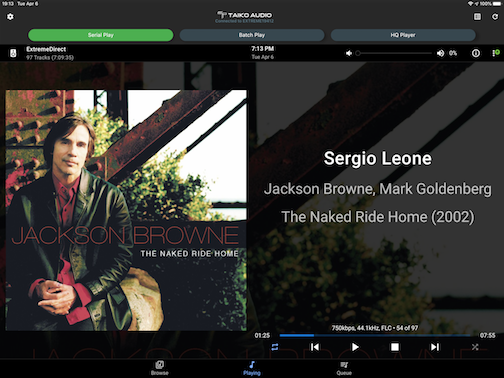
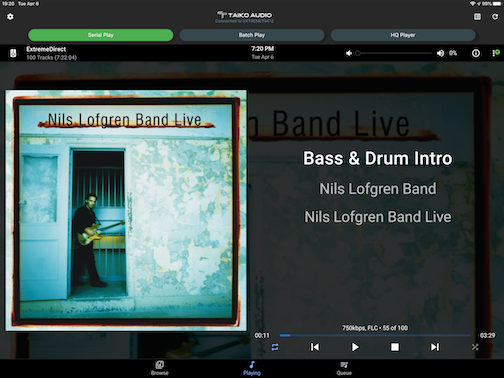
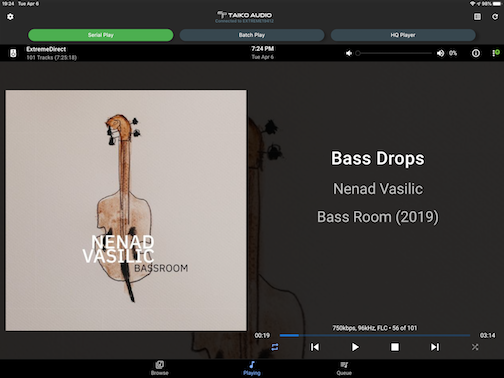
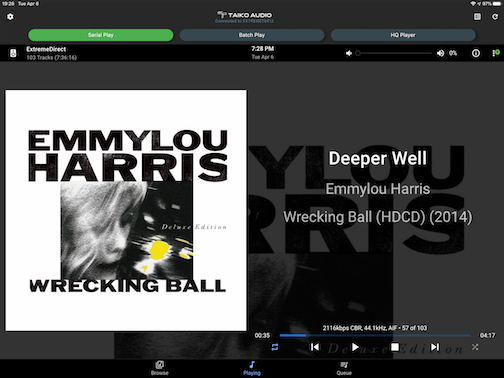
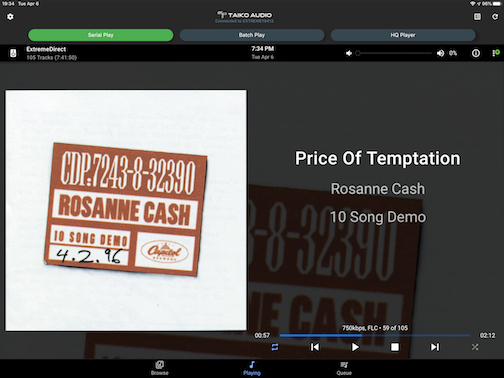
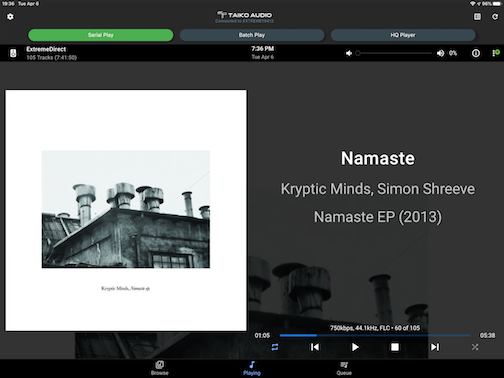
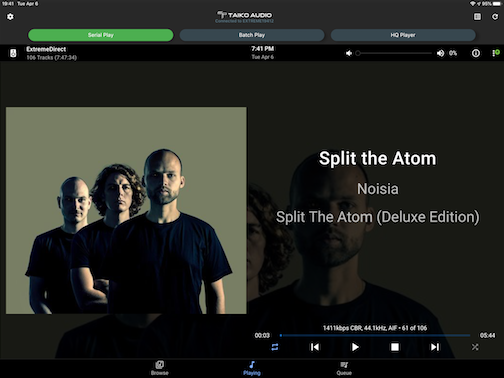
I can't do that comparison but spent last night doing the more obvious one- an SoTM switch vs no switch.Very interested in a Sotm vs Buffalo test if manageable to execute.

Very interested in a Sotm vs Buffalo test if manageable to execute.

 audiophilestyle.com
audiophilestyle.com
Now we need to re - run this evaluation with a XMOS 2 USB DAC ;-)Emile, only because you asked, I revisited this.
In short, the USB card has done nothing to change the relative SQ of switches and switch chains, since my last analysis of the subject here:

A novel way to massively improve the SQ of computer audio streaming
audiophilestyle.com
Here is the ranking of SQ, from best to worst:
1. No network. Last switch to Extreme powered off
2. Full monty chain of 3 switches
3. Modded Buffalo
4. SOtM and eR (tie)
5. opticalModule
6. direct attach from router (copper. 2-5 above are fiber to Extreme).
austinpop,Emile, only because you asked, I revisited this.
In short, the USB card has done nothing to change the relative SQ of switches and switch chains, since my last analysis of the subject here:

A novel way to massively improve the SQ of computer audio streaming
audiophilestyle.com
Here is the ranking of SQ, from best to worst:
1. No network. Last switch to Extreme powered off
2. Full monty chain of 3 switches
3. Modded Buffalo
4. SOtM and eR (tie)
5. opticalModule
6. direct attach from router (copper. 2-5 above are fiber to Extreme).
austinpop,
I'm confused. When you say " the USB card has done nothing to change the relative SQ of switches and switch chains,".....
are you saying that since receiving your USB board (~2 weeks ago?) you've done all these tests and your rankings are unchanged?
Or are your rankings conjecture only and have not been validated with the new USB board in the Extreme?
Marty
Thank you @austinpop
Still very limited feedback:
Impact of network configuration unchanged:
1x Chord Dave - Amanero - Chord driver - HQPlayer - Fiber
Impact of network configuration reduced:
2x Lampizator Pacific - XMOS 2 - Taiko driver - TAS - copper
1x Lampizator Pacific - XMOS 2 - Taiko driver - Roon - copper
1x Pilium Elektra - XMOS 2 - Taiko driver - TAS - copper
1x MSB Select - XMOS 2 - Taiko driver - TAS - copper
If anybody else is willing to take the effort to add their experience, it would be much appreciated.
Thank you @austinpop
Still very limited feedback:
Impact of network configuration unchanged:
1x Chord Dave - Amanero - Chord driver - HQPlayer - Fiber
Impact of network configuration reduced:
2x Lampizator Pacific - XMOS 2 - Taiko driver - TAS - copper
1x Lampizator Pacific - XMOS 2 - Taiko driver - Roon - copper
1x Pilium Elektra - XMOS 2 - Taiko driver - TAS - copper
1x MSB Select - XMOS 2 - Taiko driver - TAS - copper
If anybody else is willing to take the effort to add their experience, it would be much appreciated.
austinpop, Thank You for taking your time and sharing all these data. I've noticed above that you mixed SFP: Planet on the Buffalo and Finisar on the Sotm, Is that correct? Which SFP are you using on the Extreme?Certainly Emile, happy to oblige.
My original plan was simply to compare "basic connection" with "full monty 3-switch chain," but I'll now add 2 more test scenarios. So the test will now compare Extreme (with new USB card) SQ, when the network path is:
1. Basic connection:
Upstream > Supra Cat 8 > Sonore opticalModule > Finisar SFP > Extreme
2. Single switch - modded Buffalo:
Upstream > Supra Cat 8 > modded Buffalo > Finisar SFP > Extreme
3. Single switch - SOtM:
Upstream > Supra Cat 8 > SOtM > Finisar SFP > Extreme
4. Full Monty 3-switch stack:
Upstream > Supra Cat 8 > (A) eR (A) > Sablon Eth > modded Buffalo > Planet SFP > sNH-10g > Finisar SFP > Extreme
To clarify: my "modded Buffalo" is a Buffalo BS-GS2016 switch, modded to remove the internal SMPS and be powered by an external LPS. It also has a cap board of @nenon 's own design. This unit does not have a PF OCXO clock.
@austinpop: do i have this correct? in other words, is the benefit of your networking of a similar magnitude as with the old usb connection? has the new usb card reduced the delta between the various network options? lastly, can you place your old reference (full monty with old usb) in comparison with any of the new usb card options?
austinpop, Thank You for taking your time and sharing all these data. I've noticed above that you mixed SFP: Planet on the Buffalo and Finisar on the Sotm, Is that correct? Which SFP are ywheou using on the Extreme?
For me, the best results are Finisar on the Extreme and Planet on the OM.
Yes, Thank You for the Clarifications!Apologies if I confused you there! I have a pair of each transceiver deployed. So when I say:
Upstream > Supra Cat 8 > (A) eR (A) > Sablon Eth > modded Buffalo > Planet SFP > sNH-10g > Finisar SFP > Extreme
That means:
- I have a pair of Planet Tech MGB-TLX transceivers, one in the Buffalo's SFP slot, the other in the SOtM's SFP slot, and
- a pair of Finisar FTLF1324 transceivers, one in the other SOtM SFP slot, and the other in the Extreme fiber card's SFP slot.
Hope that clarifies matters?
I recall Emile saying that his M12 switch was not beneficial in his system with the TAS/new USB set up. Bob (Rhapsody) reported the same after TAS.
Kris, who has a seriously tricked out set-up (with multiple switches, clocks, power supplies), reported they still improve his sq after TAS. I don't think he's said if that's still the case after the USB card? I'd be curious to know about that. I believe Markus Barkus also has a clock-modded Buffalo switch...
I have a Melco switch with nice Sean Jacob power supply and am looking forward to comparing with and without now.
| Steve Williams Site Founder | Site Owner | Administrator | Ron Resnick Site Owner | Administrator | Julian (The Fixer) Website Build | Marketing Managersing |


